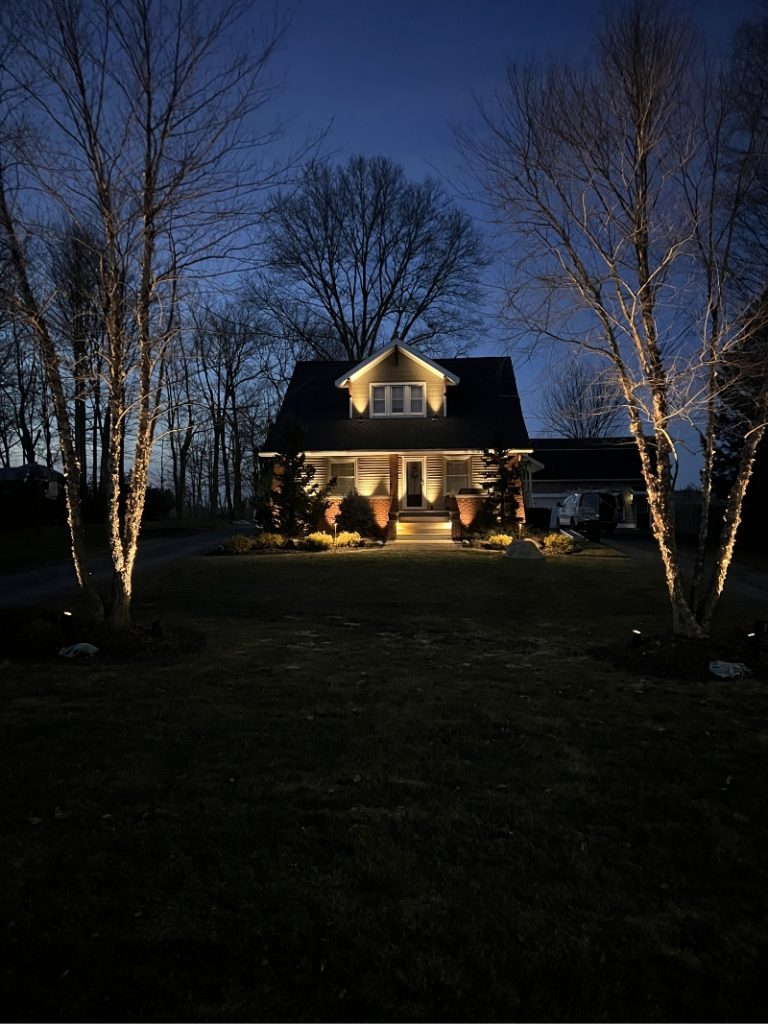FRequently Asked Questions

Have questions about our services, process, or lighting in general?
What types of lighting services do you offer?
How does permanent roofline lighting work?
Can I control my lights from my phone?
Are your lighting systems weatherproof?
What is the warranty on your lighting systems?
How much does a custom lighting installation cost?
Pricing varies based on the size of your project and the type of lighting you choose. Schedule a free consultation or request a quote and we’ll provide more details based on your needs.
Do you offer maintenance and repair services?
How long does installation take?
Can I set timers and automation for my lights?
How do I get started?
It’s simple! Schedule a free consultation, and we’ll discuss your lighting goals, design options, and installation details to create the perfect lighting plan for your space.
10 Must Ask Questions Before Hiring A Lighting Contractor
Are you a qualified designer or an installer? If yes, what qualifications do you have?
You want to find out if they are an artist with lights, or if they just know how to twist wires together. Placement matters, A LOT. Inches matter, small micro clicks in one direction matter. Creating shadows on purpose, creating usability of space, up lighting and down lighting etc. Using the correct fixture for what you are trying to accomplish. The correct color, beam spread, wattage, etc. This is a live portrait of your home that you will see EVERY day, make sure you like what the artist is painting. Do they have pictures, houses to drive by, social proof? Most trades require years of training, like roofing, electrical, plumbing, concrete, design etc. Low voltage lighting requires none. An improper install will not last and you will be hiring someone else to replace it in 3-5 years (ask us how we know)
What type of input can I have?
Will you give me a master plan/as built? And walk me through my system?
95% of installers will not provide anything post install. You want to know where the wires are buried, where the connections are, how to replace a lamp or what kind of lamp is needed, etc. 3 years from now, no one will remember. A good As Built can help solve a problem within 30 minutes compared to a full day (which saves you money). Finding a problem without a plan is like finding a needle in a haystack.
Simple things like, where is it plugged in? And how to control the timer? Will save you a headache in future.
Where do you get the lights from? Is there any type of additional warranty from the manufacturer?
You basically want to know that they are not buying something cheap. Not buying from a box store (Home Depot, Lowes, Ewing, Site One, etc.). Those are all cheap, China made materials. A real lighting contractor and designer would never do this.
We buy high quality, American made products that are made to avoid our 7 deadly sins of lighting, from lifetimelightingsystems.com. They have a lifetime manufacturing warranty.
When (will) my landscape matures, is there a plan for that?
What happens if any part of the system fails? Do I need a maintenance plan? What will it cost if something stops working?
Stuff happens. Little Billy will trip on a light, or hit with a ball. Amazon drivers will knock things over, lawn guys are the worst. Maintenance-ability is one of our 7 deadly sins. Lights have to be protected and not installed in areas prone for accidents. Some lights are called ‘Integrated’ and if something breaks or stops working, you are replacing the entire fixture. If that fixture is discontinued 7 years from now, then you are replacing your entire system…. On the lights we install, every part is replaceable, we want your system to last a lifetime. If it is under warranty, how does the labor work? What if I need a small fix, what does that look like?
What are my home’s challenges?
Not every home has a difficult challenge but any small challenge can separate a Mickey Mouse install from a true professional install. You simply want to find out they know what they are doing. Common challenges may be: lack of outlets, long wire runs, voltage drop, hiding wire, un-trenchable areas, high in trees, glare (#1 deadly sin), maintenance-ability locations, etc.
What methods of wiring organization do you use? What kind of connections? How is it set up so we can add additional lights?
It is common that folks will use wire nuts and this is what you want to avoid. Wire nuts, electrical tape, butt splice are words that you should walk away from. Your wire will deteriorate over the years and your entire system will be trash. We SEE this all the time. You want to hear the word ‘grease.’ Even wire nuts with grease are not the best for the long term. A direct burial grease tube, and copper crimps are what every professional must use for low voltage lighting.
You also want connections at the fixture or in a Hub/Home box. You NEED to know where these are to fix things. The contractor will forget within weeks after the install (ask me how I know). All wire in the Hub boxes should be labeled, otherwise it is just a spaghetti bowl of wires and you have no clue where each goes. There should also be extra slack left so you can move a fixture as the landscape grows. It is VERY common these connections are simply buried leaving you clueless for future considerations.
Can I see what it will look like before making a decision? Or before things are permanent? Do you come at night to adjust where needed?
I look around my neighborhood and see a lot of problems such as bent or crooked path lights, rusted and corroded lights, and variations in light colors. What are the possible reasons for the lighting looking worse as time goes on? Will that happen to mine?
Things you want to hear: Placement of fixtures matters. For instance – You do not install fixtures sticking in grass. The lawn guy, or someone, will hit it. You do not want a pathlight too close to the path, it will get hit one day. One thing we like to do is install those in a boulder, makes it permanent and looks cool. Or install the tree light on the tree vs the ground.
Maintenance-ability is one of our 7 deadly sins addressed before install. Post install, landscape grows or dies, lens’s get dirty, ants/insects can invade a light, people/deer/cars/etc can bump into the lights. Basically, someone needs to maintain them if you want it to last forever. Ask what that looks like.
